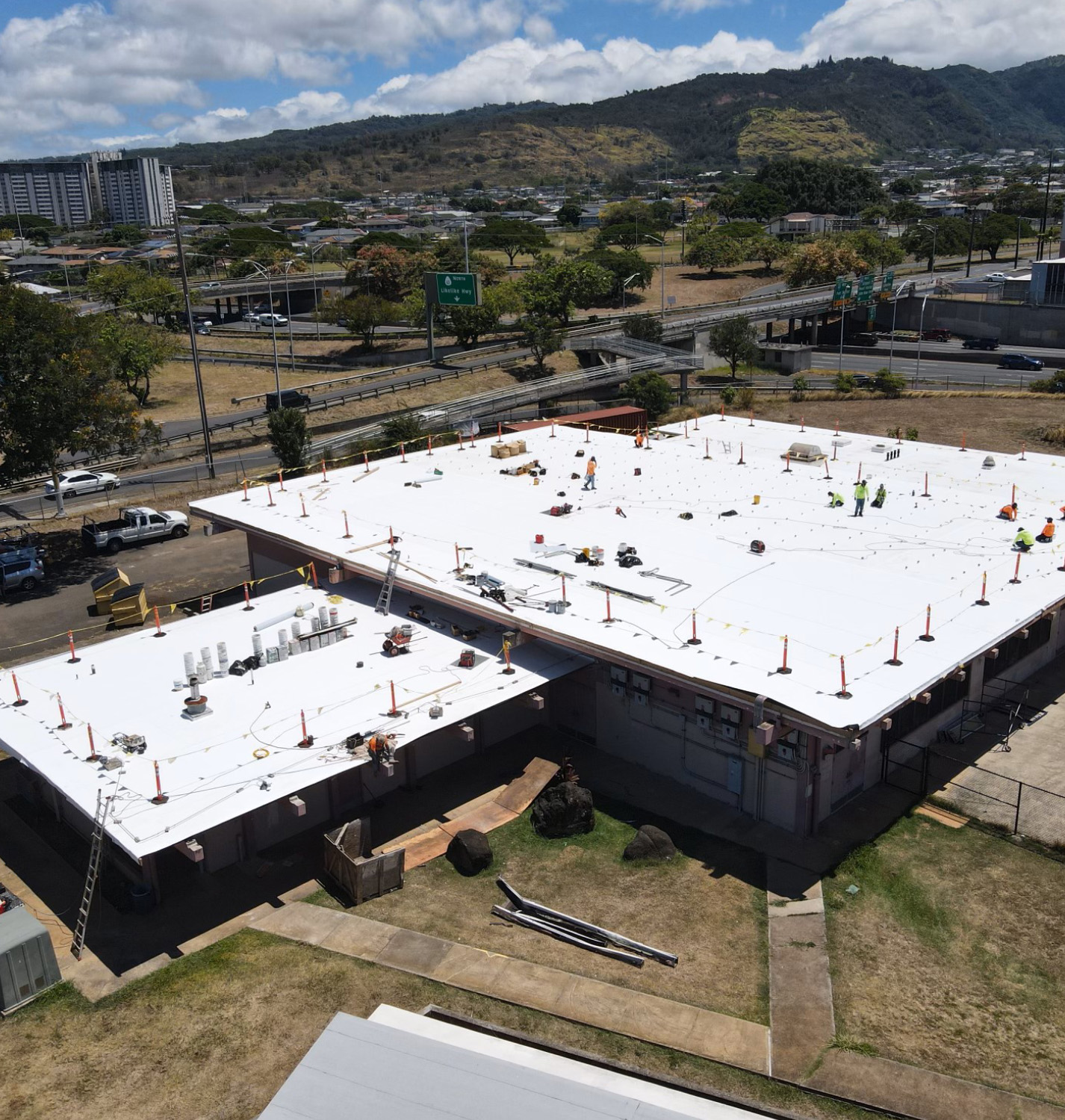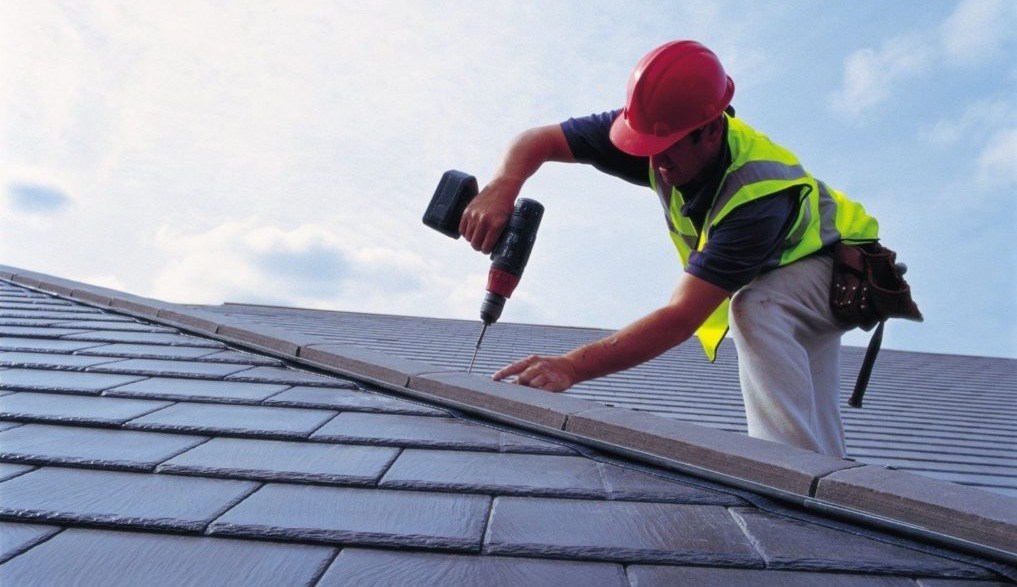Discover Common Roof Problems and Just How to Address Them Successfully
When it pertains to your roofing, spotting troubles early can save you money and time. You could observe water spots on your ceiling or fractured tiles throughout your routine checks. Disregarding these indicators can lead to larger issues down the line. Comprehending how to recognize and attend to these usual roof troubles is necessary for maintaining your home's stability. What particular actions should you take to assure your roofing system remains in leading condition?
Identifying Roof Leakages and Their Reasons

Following, examine your roof from the outside. Look for missing out on or broken ceramic tiles, rusted flashing, or harmed rain gutters. Focus on locations around smokeshafts, vents, and skylights, as these prevail leak resources. If you spot any one of these concerns, it's crucial to resolve them immediately.
During hefty rain, observe your roof covering for any merging water or drips. This can reveal leakages that could not show up during completely dry conditions. By remaining alert and regularly checking your roof, you can catch leakages early and safeguard your home from further damage.
Managing Missing or Harmed Roof Shingles
When you see missing out on or damaged roof shingles, it's important to act promptly to stop additional concerns. You'll want to recognize the extent of the damage, repair any type of missing shingles, and take into consideration preventive maintenance tips to keep your roofing system in leading shape. Taking these actions can conserve you money and time in the future.
Identifying Shingle Damages
Although shingles are created to hold up against the elements, they can still experience damages over time, leading to possible leakages and pricey repair services. To identify shingle damage, begin by evaluating your roofing for missing out on, split, or curled roof shingles. Seek signs of discoloration or granule loss, which can show wear and tear. Take notice of any kind of locations where roof shingles are lifting or twisting, as these can produce vulnerabilities. It's likewise wise to look for water stains or mold and mildew on your ceilings and wall surfaces, as these might signal leakages originating from harmed tiles. Frequently monitoring your roofing, particularly after severe climate, can assist you capture problems early and maintain the integrity of your home.
Repairing Missing Shingles
After finding shingle damages, the next action is resolving any type of missing or damaged shingles promptly to protect against more problems. If you can, climb onto your roof securely, using ideal gear. Taking action promptly will assist maintain your roofing's honesty and extend its life-span.
Preventive Maintenance Tips
Just how can you keep your roofing in leading shape and prevent tiles from going missing out on or obtaining damaged? Normal inspections are essential. Examine your roofing a minimum of two times a year and after serious weather condition. Try to find signs of wear, such as curling, fracturing, or loose shingles.
Maintain gutters clean and without particles to guarantee appropriate water circulation and avoid shingle damages. Trim overhanging branches to decrease the risk of them scuffing against your roof covering during tornados.
Consider using a protective sealant to extend your shingles' life-span. If you observe any kind of issues, address them immediately to avoid costly repair work later. Taking these preventive actions can conserve you money and time while guaranteeing your roofing system continues to be resilient and reliable.
Understanding Roofing System Ventilation Issues
Correct roofing system air flow is necessary for keeping the long life and efficiency of your roofing system, as it helps regulate temperature and dampness degrees in your attic. Without sufficient ventilation, you might deal with problems like extreme heat buildup, causing early roof shingles degeneration, or enhanced humidity that can trigger mold growth and wood rot.
To assess your roofing air flow, look for signs of overheating, such as distorted roof shingles or a hot attic room. Seek obstructed vents, which can limit air flow and trap warm. You should assure your consumption and exhaust vents are well balanced, permitting correct air exchange.
If you believe air flow issues, consider mounting extra vents or updating existing ones. Ridge vents, soffit vents, and gable vents can all enhance air movement. Resolving these problems quickly can safeguard your roof covering and conserve you from expensive repair work down the line. Keep positive in maintaining your roof covering's air flow to protect your home.
Resolving Roofing System Moss and Algae Development
While you may appreciate the all-natural look of moss and algae on your roofing, these microorganisms can cause considerable troubles if left unattended. They catch dampness, which can lead to shingle degeneration and leakages. To tackle this issue, begin by eliminating any kind of visible development. Make use of a soft-bristle brush to delicately scrub away the moss and algae, taking care not to harm your tiles.
Following, consider applying a specialized roofing system cleaner or a blend of water and bleach to eliminate staying spores. her comment is here Rinse completely to avoid any chemical damages. In addition, mount zinc or copper strips along the ridge of your roof. As rain washes over these metals, it produces a safety barrier against future development. Regular evaluations and maintenance will assist prevent moss and algae from returning, ensuring your roof covering remains in excellent form for many years to come.
Fixing Tornado Damages and Wind Concerns
After a tornado, it's crucial to analyze your roofing for damage triggered by high winds and heavy rain. Beginning by inspecting for missing or damaged tiles, as these are usual casualties.
Seek any type of sagging locations, which might show water build-up or structural concerns. If you locate any particles, like branches or leaves, eliminate them carefully to prevent more damages. If your rain gutters are clogged, clear them to guarantee appropriate drainage.

For tiny repair work, you could handle it yourself, yet don't wait to call a professional for substantial damages. Keep in mind, acting quickly can save you from bigger troubles down the line, so take that analysis seriously and attend to any kind of issues immediately.
Recognizing Indicators of Architectural Damage
How can you tell if your roof covering is struggling with architectural damages? Beginning by looking for noticeable sagging or dips in your roofline. These indications suggest that the underlying framework might be endangered. Next, look for splits or voids in the wall surfaces or ceiling, as these can signify shifting or clearing up as a result of roofing system issues. Take note of leaks or water spots, particularly in areas where the roofing fulfills wall surfaces. If you observe missing out on or broken shingles, it's necessary to resolve them promptly, as they can expose your roofing system to more damages. Evaluate your attic room for any type of indications of daylight peeking with, which could mean your roof covering's honesty is at threat. Ultimately, pay attention for unusual creaking or popping sounds, as they may indicate structural stress and anxiety. If you notice any one of these indications, it's time to seek advice from click for more a roof professional for an extensive evaluation.
Regular Upkeep Tips for Longevity

Regular Examinations Importance
Given that a roof is your home's first line of defense against the components, routine examinations are necessary for preserving its integrity. You should examine your roofing at the very least twice a year, preferably in spring and fall, to capture possible issues early. Maintaining up with these evaluations can prevent expensive repairs down the line and extend your roof covering's life expectancy, guaranteeing your home stays secure and sound for years to come.
Proper Rain Gutter Upkeep
Routine roofing inspections naturally cause the significance of appropriate gutter upkeep. Clean your rain gutters a minimum of twice a year to protect against clogs from leaves, dust, and debris. If you live in a tree-heavy location, take into consideration examining them regularly. Make use of a sturdy ladder and wear gloves while eliminating the accumulation. Check your seamless gutters for leakages or corrosion; they can create water damage to your roofing system and home. Make certain downspouts straight water far from your foundation to avoid flooding. Mounting gutter guards can minimize debris build-up and decrease maintenance time. Lastly, check for proper slope; seamless gutters should incline toward the downspouts to guarantee ideal drain. By complying with these ideas, you'll expand your seamless gutters' life expectancy and safeguard your roofing system.
Often Asked Questions
Just How Can I Select the Right Roof Material for My Home?
To pick the best roofing product for your home, take into consideration environment, toughness, and aesthetics. Research study options like asphalt shingles, steel, or ceramic tile. Think of upkeep requirements and budget to locate what fits you finest.
What Are the Indications I Required a Roof Covering Substitute As Opposed To Repair Work?
If you observe widespread leaks, drooping, or missing out on shingles, you may need a roofing substitute. If your roof's nearing check that its life expectancy or has considerable damages, it's time to ponder a full replacement rather of just repair services.
Just how Frequently Should I Arrange Professional Roofing Evaluations?
You must set up specialist roof evaluations at the very least once a year, ideally in spring or autumn. This assists capture potential issues early, ensuring your roofing system stays in excellent condition and prolonging its life expectancy.
Can I Set Up a New Roofing System Over My Old One?
You can set up a brand-new roof over your old one, but it's necessary to inspect regional structure codes and assure the existing roof's condition is audio. This strategy can save time and money, but consider potential complications.
What Is the Ordinary Life Expectancy of Various Roof Materials?
The average lifespan varies by material: asphalt shingles last 15-30 years, steel roof coverings can last 40-70 years, while floor tile or slate roofs may go beyond 50 years. Pick sensibly based on your climate and budget.
Conclusion
By remaining alert and addressing typical roofing issues immediately, you can safeguard your home and expand your roofing system's lifespan. With a little regular maintenance, you'll not only secure your financial investment yet also enjoy tranquility of mind understanding your roof covering is in top form.